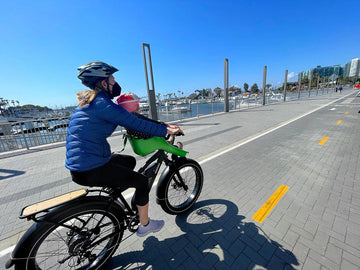Cycling is an excellent sports activity, that does require keeping the body hydrated. As a physical activity, it puts a strain on the muscles and hydration is extremely important if you want to preserve the well-being, balance, and strength to carry on. And the best way to do so is to use hydration packs. Hydration packs are designed with the main purpose of transporting water. They also make drinking easy and convenient, and efficient. What is truly great about the hydration packs is that when cycling, you do not even have to stop or slow down to re-hydrate. You can just easily pick the drink tube that is connected to the water reservoir, which is also known as a water bladder.
Finding the proper and the most suitable hydration pack is an easy thing if you know what you are looking for. The first thing that you would want to pay attention to is to look for a model that is designed for your suitable activity. After that, other things that you need to consider are the water capacity, the fit, and the extra features it provides.
Water capacity
The real benefit of finding the right hydration pack will instantly become visible by choosing the right water capacity. As a cyclist, you will need to figure out how much water do you need and would like to carry with you. A thing that you should also consider here is to know that you do not always have to fill the water bladder completely. This is great for the day rides, and for the longer rides you can fill it up to the top. The size and the weight of the hydration packs are also very important. Even with an empty reservoir, a hydration pack with a larger capacity will weigh more than one with a smaller one.
Most commonly, the water bladders can be found in four sizes: 16 oz (0.5 L), 50oz (1.5L), 70oz (2L), or 100oz (3L).
0.5 L packs – are packs with minimal water capacity. They are usually waist packs that include one or two water bottles. They are great for lightweight and short cycling. However, the smallest size is not very common lately.
1-1.5 L packs – this type of packs are a great option for minimalists, kids, and short-distance bike cyclists and commuters.
2-2.5 L packs – These are the most popular reservoir sizes that offer a nice balance of weight and bulk, while at the same time, carry a sufficient quantity of water.
3 L or more packs - these are the biggest and the largest water hydration packs, that are great for the long cycling routes.
The design of the hydration packs carries a special area for the bladder, which is usually positioned around a particular bladder size. This part is usually separated from the rest of the hydration pack. There is a padded section between the back and the reservoir itself that adds to the comfort and minimizes the feeling of a liquid against the back and spine while cycling.
So, the main question that many would ask themselves is how to decide how much storage you need? Keep in mind that more space is always better than less, and of course, you do not always have to fill the tank up. However, on the other hand, if you do not drink much when cycling, then a smaller one would be the best fit.
Storage space
Although it is called a "hydration pack", when it comes to these reservoirs and packs in general, the water capacity is not the only thing that needs to be considered. The storage space is also very important and it does vary quite a lot. Such a pack can have barely room to put the keys and the phone in it, to ones that can carry everything from camping gear to other accessories. A minimal pack, 5 liters or less, is great for those who have ample frame storage on the bike, want to carry plenty of water, and leave the frame bags for other things. If your bike has a bigger frame, such as fat tire electric bike, then, it is best to go with a larger water pack, from 11 to 20 liters, that will fit everything you need to carry with you. The most common choice falls somewhere in between in the 6-10 liters pack when you can carry enough water, and yet have the space to carry some items, tools, or rain jacket for example.
Waterproofness
Another important factor, besides the water capacity and the storage capacity, is the waterproofness of the pack. Many would find this extremely necessary and important since you cannot always predict the water and you might cycle in the rain. In those cases, the waterproof water pack will keep the storage area and all of its belongings dry and safe.
The waterproofness of the water packs comes from their material – fabric. They can be made from a waterproof fabric, or they can have a waterproof cover that can be pulled out of the pack in case of rain. This is an important detail to consider, especially for those who might be carrying some sensitive equipment like a camera and other accessories that might become damaged or nonfunctional when in contact with water.
For all those who are cycling regularly, whether that is a sports activity, a hobby, or a way to work, owning and having a hydration pack is one of the best accessories that you can have. During the summertime cycling routes, the hydration pack will become more than beneficial. Not only does it carry the water and offer easy access to it, but also prevents the pollution of the environment since you will not use plastic bottles.














































